METAL HUNGER
India’s iron giant ready to dynamite them thar hills of KwaZulu-Natal
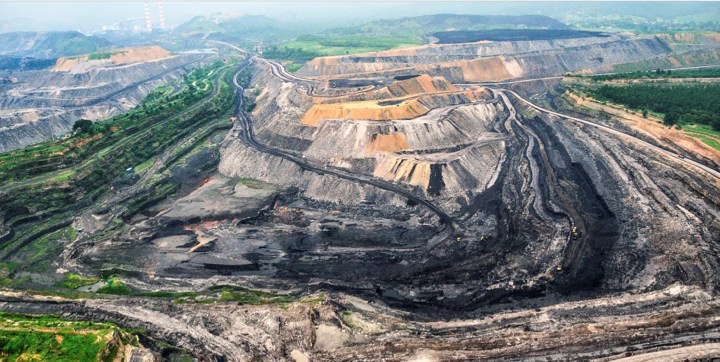
If Jindal Steel and Power and its Johannesburg-based BEE partner Thabang Khomo get the nod from the Department of Mineral Resources and Energy, somewhere between 200 and 300 families will be booted from their rural homesteads to make way for a new open-cast iron ore mine close to the towns of Melmoth and Eshowe.
The Iron Giant, a 1999 Hollywood animated movie, tells the story of an unusual friendship between a nine-year-old American boy and a giant robot that arrives from outer space during the Cold War era.
In the end, the Superman-like alien with an insatiable appetite for metal becomes a national hero, soaring heavenwards to sacrifice his body in front of a nuclear missile.
Can similar heroic outcomes be presumed with the latest South African mining plans by the India-based metals giant Jindal Steel and Power?
Its local subsidiary, fresh from the chrysalis of a business rescue plan, has set its sights on blasting millions of tonnes of magnetite iron ore from the hills of KwaZulu-Natal.
If Jindal and its Johannesburg-based BEE partner Thabang Khomo get the nod from the Department of Mineral Resources and Energy, somewhere between 200 and 300 families will be booted out of their rural homesteads to make way for a new open-cast iron ore mine close to the towns of Melmoth and Eshowe.
That’s just the first phase. Jindal Africa is dreaming big.
Several thousand more people stand to be uprooted if the company expands its operations over the full 21,000-hectare chunk of prospecting land.
To put that figure into perspective, it’s roughly the same size as the Table Mountain National Park (25,000ha) or nearly three times bigger than Ndumo Game Reserve (11,000ha).
According to Jindal environmental consultant Nathi Ncube, the first iron ore pit will be 4km long, 1km wide and about 300m deep.
Jindal has yet to disclose how much water will be needed for the mine, though SLR environmental consultant Matthew Hemming acknowledged at a public meeting last year that: “A big mine like this will need a lot of water to operate… One option will be to get the water from the Goedertrouw Dam and the Mhlathuze River, but Jindal already knows that there is not a lot of water available in those water sources, so another option being explored includes building a pipeline from the Tugela River to the mine.”
According to Jindal consultants, the new mining venture also has much to offer at a local and national level.
“The Jindal Melmoth Iron Ore Project (MIOP) will potentially be one of the largest direct foreign investment projects in South Africa in recent years with the estimated direct and indirect capital cost in the order of R15-billion.
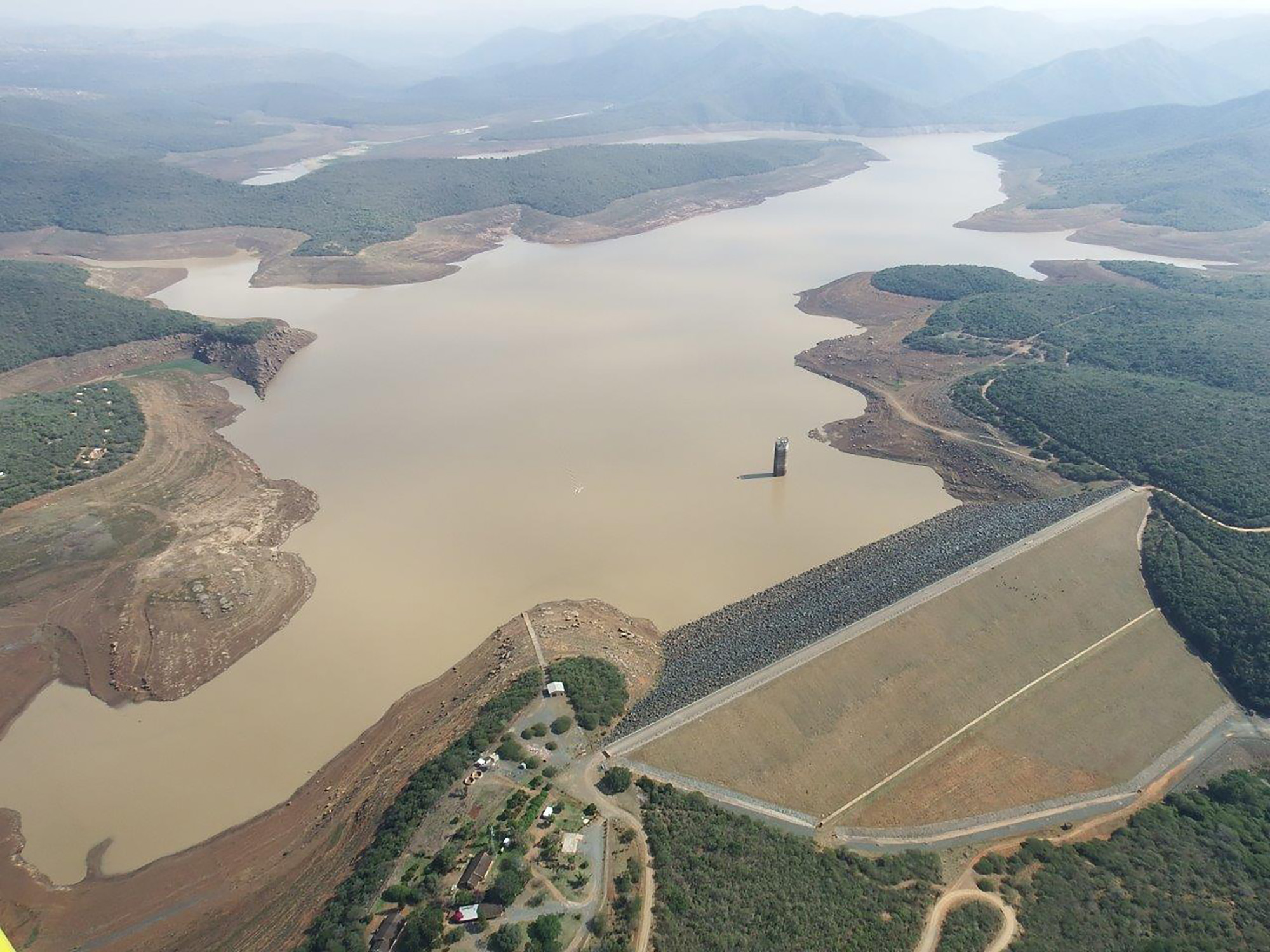
The depleted waters of the Goedetrouw Dam during the 2016 drought. (Photo: Helene Smith)
“The mine will create direct job opportunities for 820 people and indirect jobs for 1,640 people… The South African government, provincial and local municipalities will gain an additional income stream from mining royalties, taxes, permits and fees.”
SLR notes that the two mining blocks are located close to Goedertrouw Dam. The local road networks are pretty good. The area is also close to Eskom power lines and there is a rail siding to transport iron ore concentrate to the Richards Bay harbour — from where Jindal would export the ore to the Middle East and India.
But who will bear the costs?
People’s lives will change
At a meeting at Jindal’s Melmoth office last August, consultant Hemming acknowledged that: “At the moment, the project area is a rural area. People live in their homesteads with livestock and there are lots of plants and vegetation. The rivers flowing are clean, there isn’t traffic, etc.
“Once the mine is there that will all change. The local people’s lives and the things that they know will be gone. Secondly, because of the mining, blasting, trucks, etc, there will be a lot of dust and when the wind blows that dust can travel quite far.”
And of course, somewhere between 200 and 300 families would also be turfed off their land from the first of several giant mining pits.
Not surprisingly, Jindal and its consultants have received a hot reception — or simply been told to “voetsek” — at some of the recent public participation meetings in the district.
At one such meeting at Dloyezane Primary School on August 22, feelings were running high. So high that most of the estimated 100 residents did not bother to provide their contact details to SLR consultants, or simply signed the attendance register as A, B, C, D, E, F, etc.
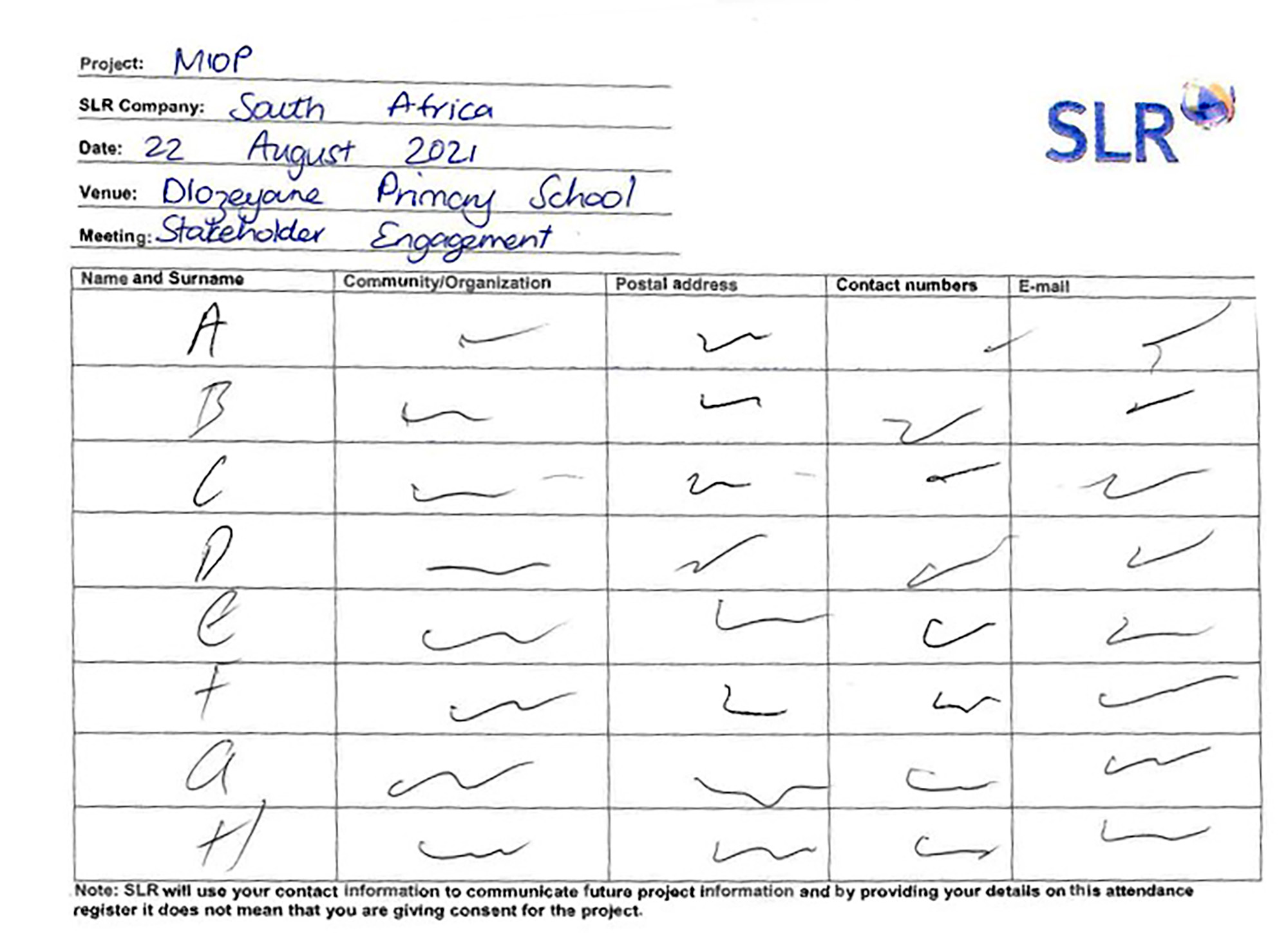
Some mine affected communities were so angry about the threat of eviction that several signed themselves as A, B, C or D on the public consultation meeting register. Then they walked out. (Image: Supplied)
Dloyezane, incidentally, is right in the middle of the first proposed mining pit and would cease to exist in its current form.
According to the meeting minutes, “Anonymous 1” asked: “What exactly are you here for? We don’t need you here!”
“Anonymous 2” asked: “Are you done with your presentation? You are not going to keep us here [in the meeting]! I hope this is the last time we’re seeing you in this place!

Some of the impacts of open pit mining. (Photo: SLR presentation, 2021)
Anonymous 3: “We do not want the mine here!” Anonymous 4: “The king himself can come back and we still won’t need this mine! We don’t want to see you here ever again!”
And then they walked out of the meeting.
Read more in Daily Maverick: Activists haul diamond-mining company to court to avert ‘moonscape’ fate for sensitive West Coast
Quite apart from concerns around eviction from their land, other stakeholders have significant concerns about the mine — and the gigantic waste tailings/sludge dump pencilled in along the banks of the Mhlathuze River a few kilometres below the main Goedertrouw Dam wall.
Clinton Gray, a citrus farmer and chairman of the Nkwalini Water Use Association, fears that the impacts of the mine and slurry dump will ripple out over a much wider area and have “massive ramifications” on the region’s scarce water supplies.
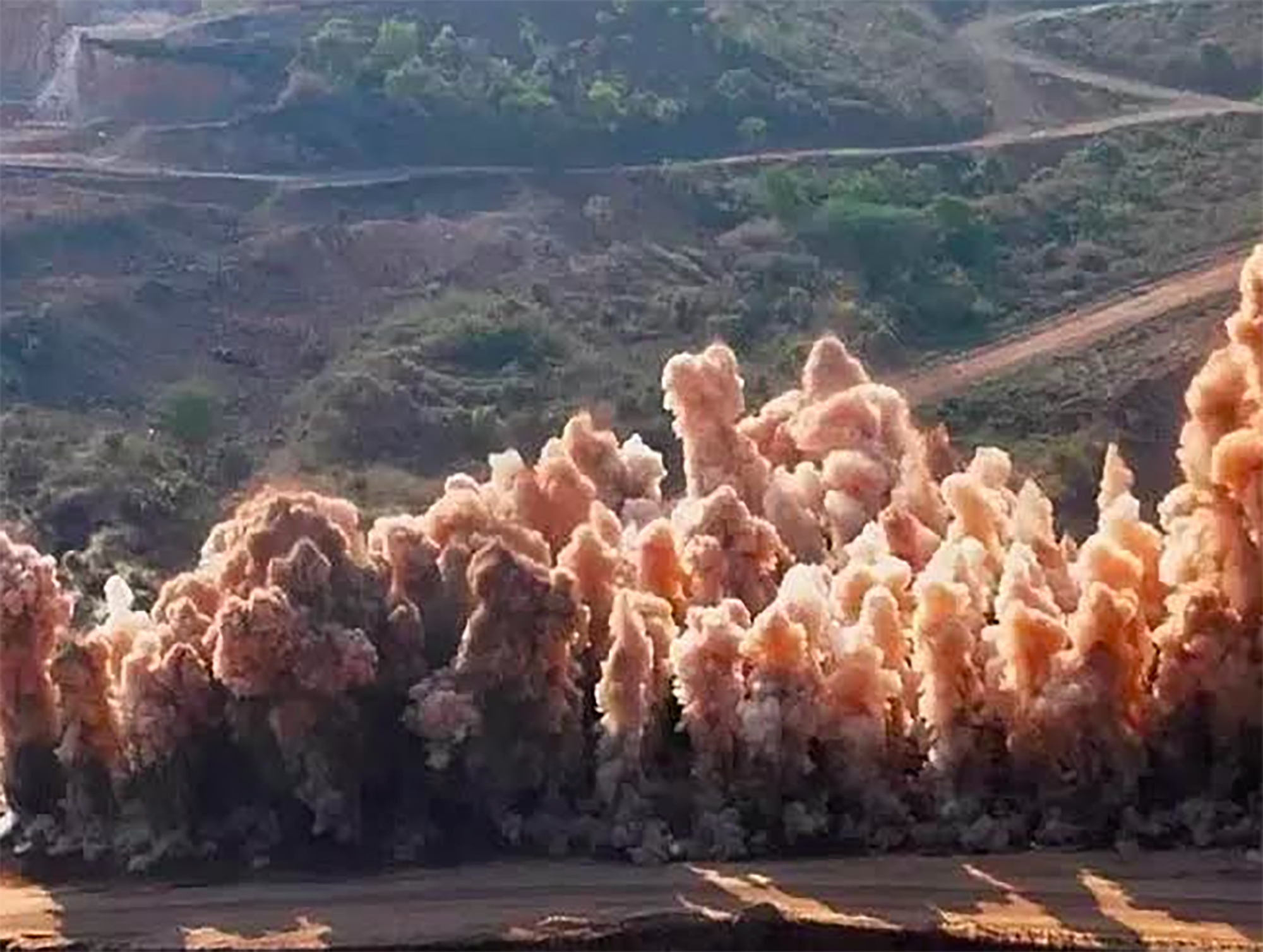
Residents who are not evicted will have to put up with the noise and dust of regular dynamite blasting. (Photo: Source unknown)
‘Water lifeline’
Gray told Daily Maverick that the Goedertrouw Dam, built in 1980, was the “water lifeline” for thousands of residents in the region, irrigation farmers, communal farmers and several major industries in Richards Bay and Empangeni.
“We are worried about both the future quantity and the quality of this water if the mine goes ahead. The consequences of any spillages or underground water pollution would be devastating.”
Gray notes that the region experienced a devastating drought a few years back, so any additional abstraction by Jindal could be detrimental for several generations.
In 2016, the level of Goedertrouw dropped to below 17% of full capacity, leading to significant water restrictions for irrigation farmers, residents and industries.
Farmers were worried that the new mine and tailings dump could lead to a further decline in sustainable water supplies, while polluted water and dust pose a further threat to citrus farmers who depend on unpolluted water and crops, especially when supplying the strict requirements of the export market.
“If, as a result of the mine, citrus becomes non-viable, the loss of jobs in the valley will be astronomical,” Gray said, noting that farmers felt so strongly that they invited the national water and sanitation minister, Senzo Mchunu, to a meeting at the Nkwaleni Farmers Hall last year.
Farmers in the Heatonville area are also worried.
Read more in Daily Maverick: Community suffers ‘continuous traumatic stress disorder’ from open-cast mining
“The general feeling is that Jindal’s consultants have failed to consult and inform communities further downstream of the directly affected areas.
“From a personal perspective, I am worried about who will bear the brunt of water shortages when the next drought arrives… Are we, the local communities, going to be sacrificed for the ‘greater good’ [of government revenue and the national economy]?” asked one farmer.
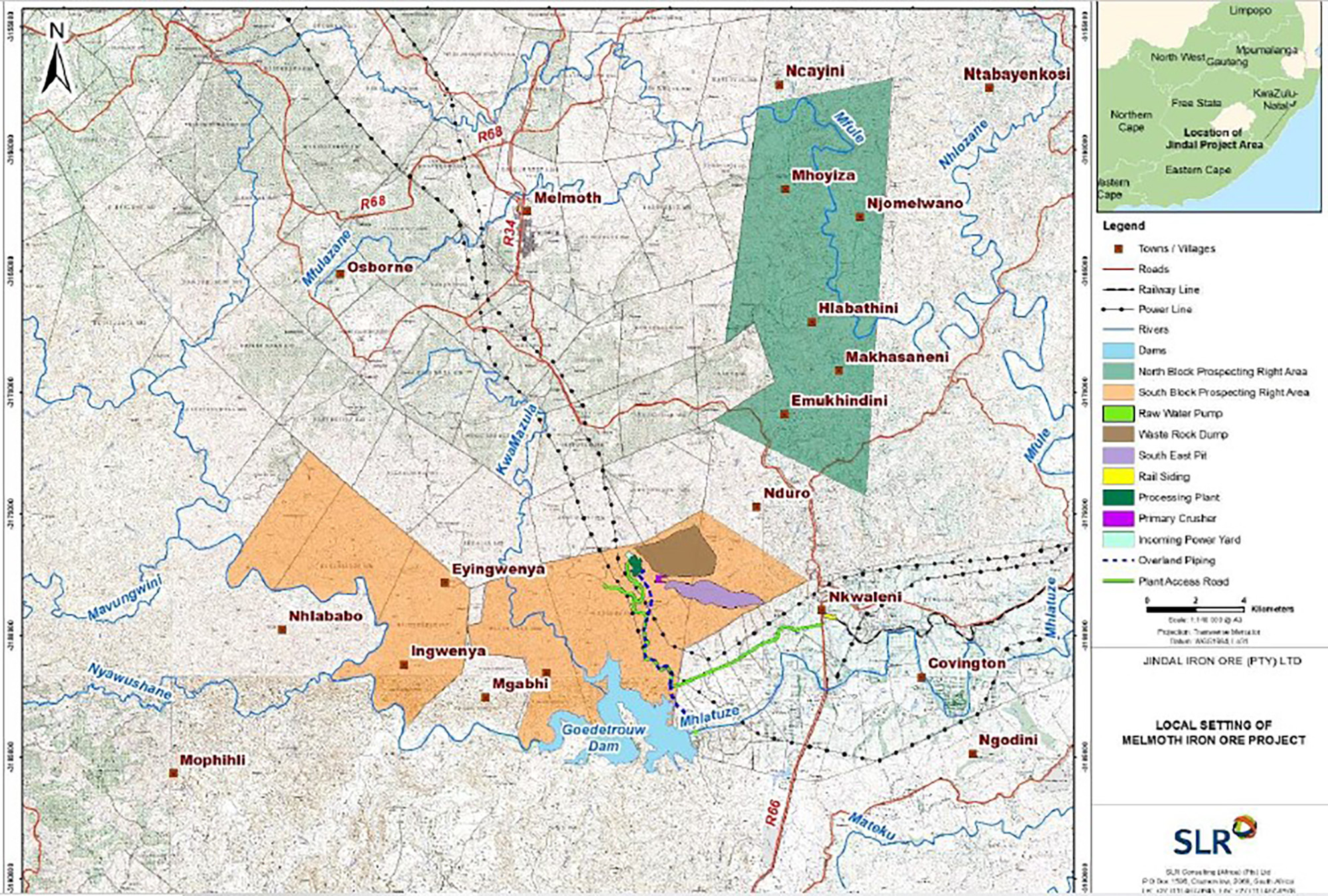
The Jindal mine location. (Image: SLR Consulting)
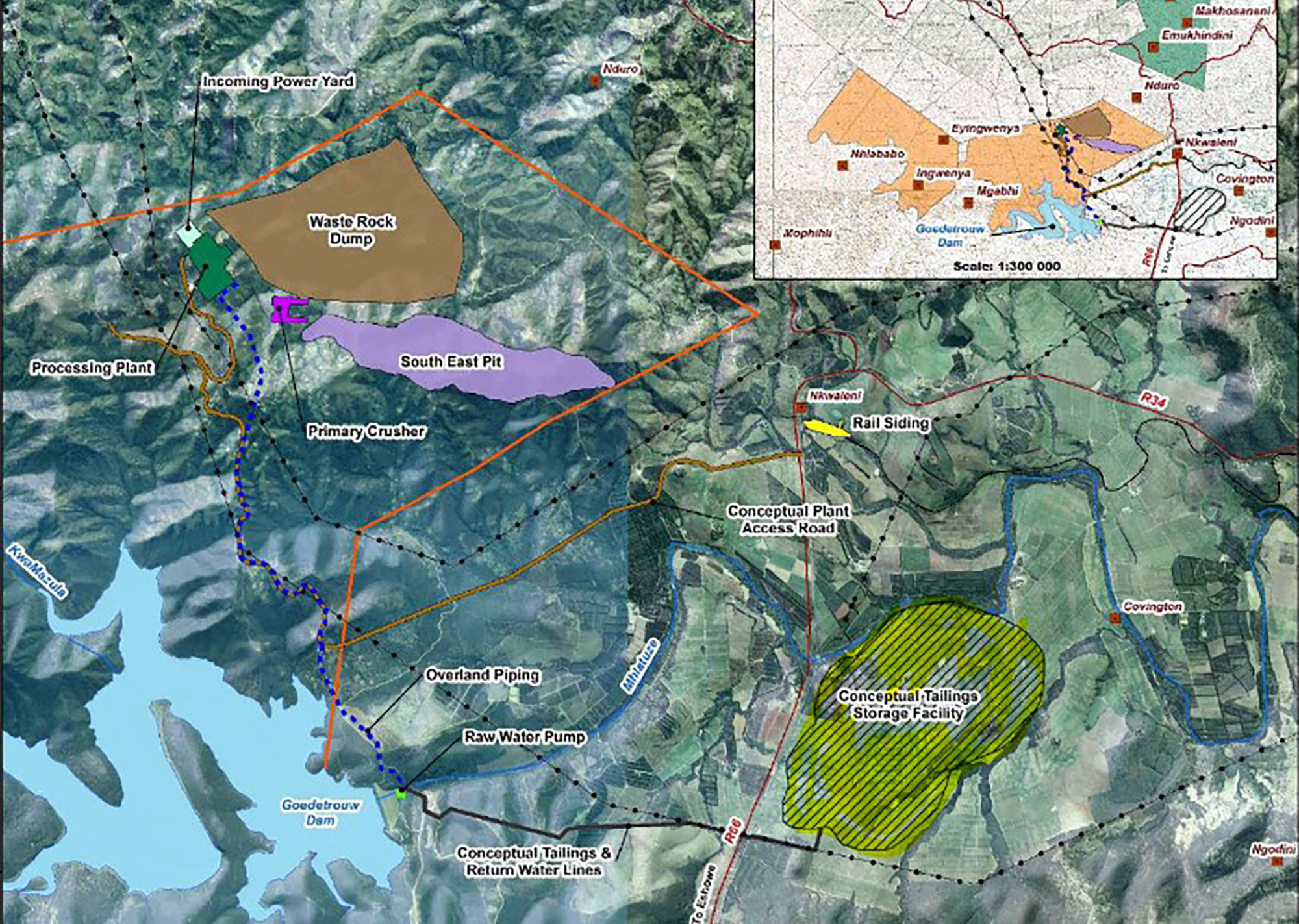
The proposed Jindal mine tailings dump (yellow). (Image: SLR Consulting)
Most discussions have focused on the directly affected mining area, but now the sheer size and potential dangers posed by the slurry/tailings dump are in the spotlight.
Iron 7 map here showing location of sludge/tailings dam
The “tailings facility”, to store slurry (liquid effluent) from the mine, would cover an area of 8km2 and stand nearly 83m high — almost as high as the Goedertrouw Dam wall (88m).
There are also discrepancies emerging around the number of jobs offered by the mine — and how this will be measured against potential job losses in other sectors because of water shortages, water pollution or other mining impacts.
While SLR’s background information document talks of 820 direct mining jobs, its consultants provided a figure of about 300 direct mining jobs during a public meeting in August.
Apart from the relocation of up to 300 homesteads, rural residents are also concerned about the loss of subsistence farmland, grazing land and free natural resources.
Another source of despair is that the graves of dozens of loved ones will have to be exhumed and relocated — possibly including the grave of the first inkosi (chief) in the Dloyezane area.
A common concern raised at the public meetings was whether individual family homesteads could refuse to move out — or have decisions imposed on them by traditional leaders under pressure from the Zulu Royal House or the Ingonyama Trust (which owns the land on paper).
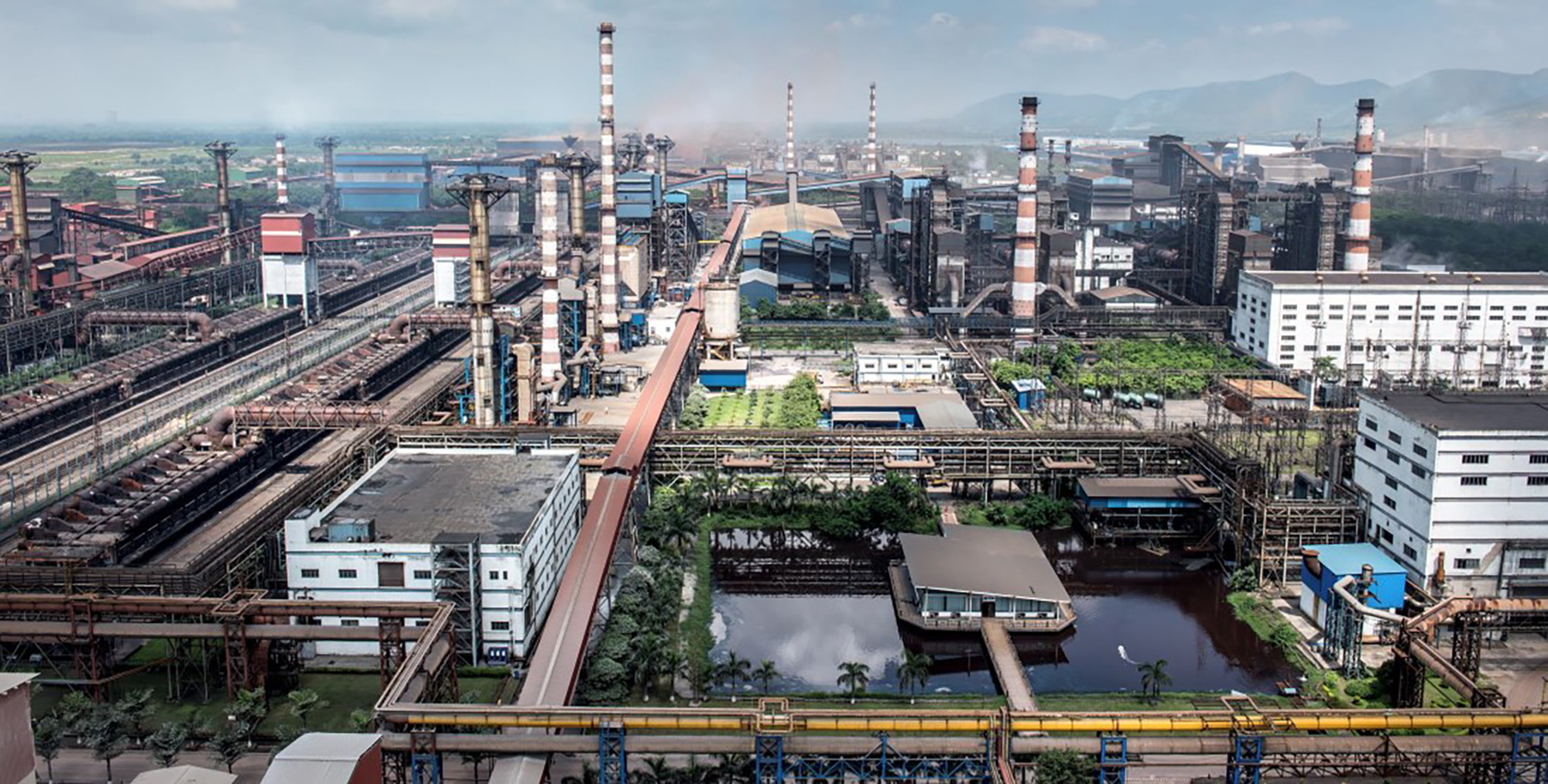
Jindal’s steel plant in Raigarh, India. (Photo: Jindal Africa)
At a meeting at the Siyavuna Community Hall, a resident stated: “There was a time not so long ago when Jindal was here and only abantwana [princes/royalty] were employed. Abantwana must not personalise the project, it does not only belong to them.”
Another resident (not named in the minutes) said: “I am confused. Has a decision been made for a mine to occur? My problem with abantwana is that when job opportunities occur, abantwana will trick us.”
At the Squbude Community Hall, Mtwana Qumela Zulu said: “My advice to the community is to listen to what Jindal has to say. I am not saying the community should agree to the mine, but we should consider what they are saying because in other areas people have been previously forcefully removed from their homes and walked away with nothing. People die and sell each other out because of mines.”
According to SLR project manager Kate Hamilton, a draft Environmental Impact Assessment (EIA) will be published for public comment at the end of May. The final EIA was due to be submitted to the Department of Mineral Resources and Energy in mid-July. DM/OBP
For tickets to Daily Maverick’s The Gathering Earth Edition, click here.





















Is Jindal Steel and Power likely to get the necessary allowances from the Department of Mineral Resources and Energy?
I certainly hope NOT😖
An Indian company involving itself with ecological sensitivities…I can only see trouble ahead! And I wonder what back handers were paid to who and how much! As for the local communities about to be displaced – they can whistle Dixie but will still vote for the ANC ( at best) or EFF ( at worst) hoping for a better result. Insanity!
1. Are the effects of the mining on the communities living South of the Mhlathuze river also considered?
(Mpungose etc)
2. What comment does the Mhlathuze Water Board have? Show their plng.
3. Long term maintenance of the tailings dam – #thinkJagersfontein
Why is SLR Consulting always involved in these dubious projects? They did the EIAs for all the fracking projects in KZN and EC 8-10 years ago too.
Even before the promise of a ‘better quality of life for all’ has been realised, new traumas are forced down people’s throats by these would-be billionaires. So sickening, all of it.
All the hallmarks of greased palms and an environmental disaster waiting to happen.
Money in the backpocket of the ANC. Stuff the citizens.